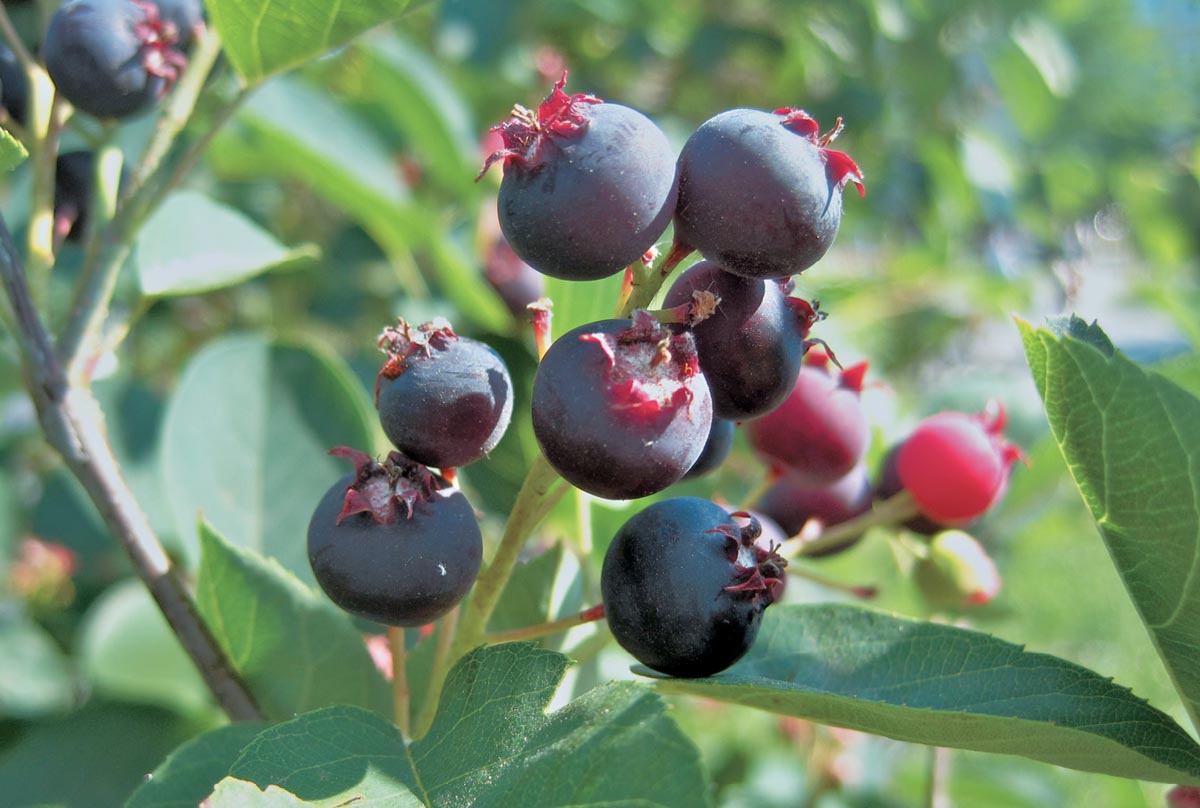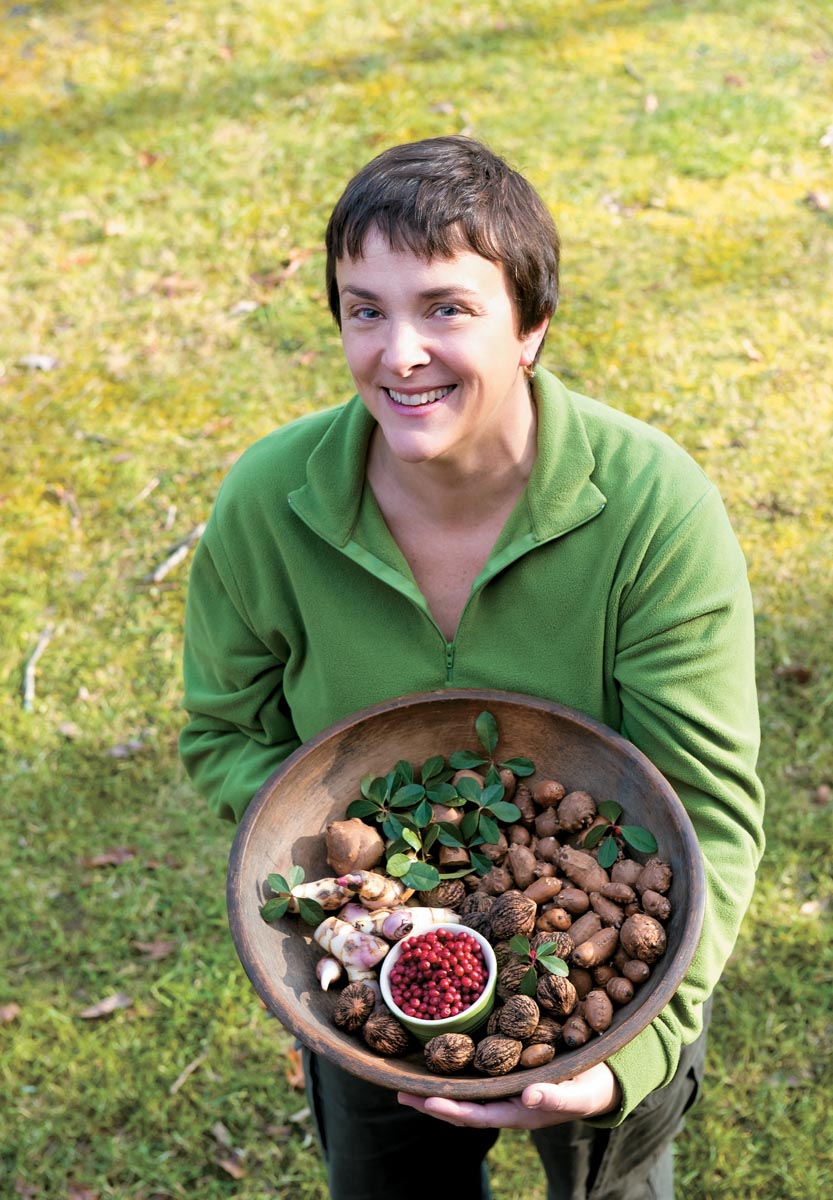
Ripe Juneberries are a juicy treat found in yards, parks, and woodlands.
“But how do you know it’s safe?”
Jacob was not about to accept my offer of ripe Juneberries without a little more information. We were hiking in the White Mountains of New Hampshire, miles away from the nearest grocery store, and as far as my nephew was concerned, the woods were not for eating. I showed him the five-pointed crown on the top of the berry, and explained that any berry with that feature was safe to eat. I showed him the tree it came from (an Amelanchier species) and its characteristic smooth gray bark and oval leaves. I cut open a berry with my fingernail to show him the small seeds dispersed throughout. Finally, I ate a few of the berries myself.

Ripe Juneberries are a juicy treat found in yards, parks, and woodlands.
When I didn’t immediately keel over or grab my stomach in anguish, Jacob decided to trust me, but he was right to ask questions. The first rule of foraging is never, ever, eat anything you’re not 100 percent sure of. This applies whether you’re picking in the wild or in your own backyard.
“Foraging in your own backyard!” you say. “I thought you had to wander the fields and woods to forage.” Nope. Truth is, many of our favorite garden plants have edible parts that have simply been overlooked. And since many of us already know what we’re growing in our own backyards, identification there is a lot easier than it would be in the wild. It’s a great way to start foraging and to introduce new edible plants to your menu.
This book presents familiar ornamental plants and weeds with a secret: they just happen to be delicious. Each plant has its own profile, with information on how it grows, how to harvest it while preserving its ornamental value (or how to control its weediness), and how to best use it in the kitchen. You’ll see plants in the landscape, in close-up, and as food.
But wait, there’s more! By going one step further and actually planting your garden with edible ornamentals, you can make the most out of your space, even if it’s very small. Historically, gardeners have considered ornamental plants (trees, shrubs, vines, perennials, and annuals) as separate from edible plants (fruits, vegetables, and herbs) and have planted them in different locations. Do you have the time and energy to plant separate kitchen and ornamental gardens, replete with stylish tuteurs and weeded paths? Do you have enough space to plant two different kinds of gardens? I don’t.
I look at ornamental plants with edible parts as the superheroes of the modern garden. They feed body and soul (with their deliciousness and beauty, respectively) and cut back on gardening chores by letting you focus your precious time on a single space.
“But,” you argue, “a quick trip to the supermarket is so fast and easy, why take time to walk around the backyard, looking for food?” Because it’s there. Because it’s free. And because it’s fun. The thrill of discovery (you can eat that?) is intoxicating!
Let’s walk around the neighborhood. I’ll show you the best leaves for salad and the tastiest berries to snack on. Deliciousness is key. This is not a field guide or a survival manual. Sure, it’s fun to imagine which wild plants you might live on if you got lost in the woods, but if this stuff weren’t tasty, I wouldn’t be interested. I’m not sure why today’s gardener has forgotten that daylily buds and milkweed pods are astonishingly delicious, but it’s time to get reacquainted with these excellent vegetables.
What if you don’t have your own garden? Don’t despair! Perhaps you have friendly neighbors who’d be happy to have a jar of Oregon grape jelly in exchange for letting you forage in their backyard. Whenever you’re foraging on private property, be sure you ask permission first, even if you’re only removing the occasional dandelion. It’s also possible to forage in public places when you know the rules. For example, the National Park Service allows individuals to pick up to 25 pounds of pine nuts per year, as long as they’re for noncommercial use and no trees are damaged in the picking. While most parks don’t allow wholesale harvesting of leaves and stems, they’re more relaxed about nuts and berries. Collecting mushrooms and weeds may also be permitted; just be sure to ask first.
Which brings me back to the ease and elegance of backyard foraging. You’ve already got permission, and you probably know what you’re growing. So let’s get started!

My fall harvest bowl includes wintergreen, black walnuts, canna rhizomes, silverberries, and hopniss tubers.